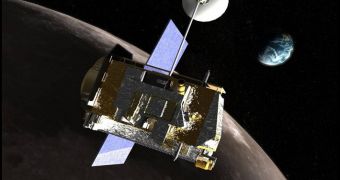Officials at the American space agency decided to extend the operational life of a sensitive camera aboard its current lunar orbiter. The extension contract is valued at $11,368,735, and is expected to run between March 1, 2011 and March 15, 2013.
According to NASA representatives from the Goddard Space Flight Center (GSFC), in Greenbelt, Maryland, this is cost-no-fee extension. The main beneficiary of the extension is the Arizona State University (ASU), which manages the instrument.
The space agency is currently in Phase E of its contract with ASU. The document regulates the terms of the cooperation between the two organizations as far as operating the Lunar Reconnaissance Orbiter Camera (LROC) instrument aboard the Lunar Reconnaissance Orbiter (LRO) goes.
Now that the contract has been extended, the ASU team will continue to manage flight operations and science analyses of that data the LROC sends back. The instrument is just a component of the advanced suite the LRO carries.
Science operations include initiating all target requests to the instrument, planning all instrument modes and turn-ons, data dissemination to the co-investigators and to the general scientific community through the Planetary Data System.
Flight operations include spacecraft operations planning, scheduling, and engineering parameter review and trending, the GSFC team explains. The reason why the contract was renewed now is because it was due to expire on February 28.
The contract regulating the GSFC-ASU collaboration on Phases A through E of the LROC exploitation plan was signed on March 30, 2005, and was due to last about six years.
The LRO will continue to make scientific observations of the lunar surface for as many years as possible. The main objective of its mission is to map as much of it as the spacecraft can.
Topography and composition maps are of extreme importance lately, as the recently crashed Japanese space probe Kaguya has evidenced the fact that uranium exists on the lunar surface.
With the new find, the prospect of a manned space mission to the Moon could become even more established, and maps of the potential landing areas need to be flawless.

 14 DAY TRIAL //
14 DAY TRIAL //